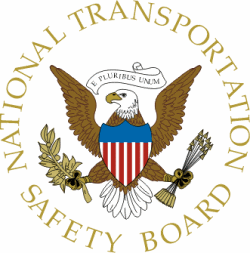Tue, Nov 12, 2013
VFR-Rated Cessna Corvalis Pilot Experienced 'Spatial Disorientation' In IFR Conditions
The NTSB has released a probable cause report from a March 2, 2012 accident in Salisbury, NC which resulted in the fatal injury of two people on board a Cessna 550FG Corvalis airplane.

The pilot was 51-year-old Steve Brown, a co-founder of Performance Springs of New Hudson, which provides engine parts for NASCAR race cars. His passenger was Karyn Martin.
According to the report, before the airplane departed on a continuing cross-country flight, a lineman at the airport spoke to the pilot and mentioned the marginal nature of the weather. The pilot responded that he was going to stay below 1,900 feet and that he should be fine. The lineman recalled looking at the automated weather observing system monitor, and it was reporting 1,800-foot ceilings and 10 miles visibility locally. Witnesses reported that the airplane’s takeoff and departure were normal. The lineman stated that the weather at the time was visual flight rules with light rain. The airplane was not captured on radar, and the pilot was not in radio contact with air traffic control. According to witnesses near the accident site, they heard the airplane flying overhead but did not see it due to heavy fog. One witness reported that shortly after hearing the aircraft overhead, he heard a loud splash in a nearby lake and, as he turned toward the lake, he saw a large spray of water. Shortly
thereafter, a large amount of debris was observed in the water. About 30 minutes elapsed between the time the airplane took off and when it impacted the lake.
The airplane was recovered from the lake and exhibited severe fragmentation, consistent with a steep, high-speed descent and impact. A postaccident examination of the airplane and engine revealed no evidence of mechanical malfunctions or failures that would have precluded normal operation. Based on the weather conditions reported by weather-observing equipment and witnesses, the pilot encountered instrument meteorological conditions. The steep, high-speed impact is consistent with an uncontrolled descent due to the pilot’s spatial disorientation.
The National Transportation Safety Board determined the probable cause of this accident to be the non-instrument-rated pilot's decision to continue flight into instrument meteorological conditions, which resulted in spatial disorientation and a loss of control.
More News
While On The Base Leg Of The Airport Traffic Pattern The Right Main Landing Gear Did Not Fully Extend Analysis: Both pilots reported that after performing airwork they returned to >[...]
From 2023 (YouTube Edition): Putting the ANT in Antihero A Beech Starship speeds along at altitude. “Deflectors on!” a voice from within the aircraft cries. “Look>[...]
Minimum Friction Level The friction level specified in AC 150/5320-12, Measurement, Construction, and Maintenance of Skid Resistant Airport Pavement Surfaces, that represents the m>[...]
“Beginning this aircraft subsystem testing is the culmination of more than a decade of focused engineering and certification refinements. This is the moment where our intende>[...]
From 2023 (YouTube Edition): The Best Option for A Pilots’ Worst Days Since its 1979 founding, Para-Phernalia, Inc. has designed and manufactured the Softie line of pilot eme>[...]
 NTSB Final Report: Piper PA-44-180
NTSB Final Report: Piper PA-44-180 Classic Aero-TV: The Bizarre Universe of Klyde Morris Cartoons
Classic Aero-TV: The Bizarre Universe of Klyde Morris Cartoons ANN's Daily Aero-Term (11.09.25): Minimum Friction Level
ANN's Daily Aero-Term (11.09.25): Minimum Friction Level Aero-News: Quote of the Day (11.09.25)
Aero-News: Quote of the Day (11.09.25) Classic Aero-TV: Falling for Para-Phernalias Softie Emergency Parachutes
Classic Aero-TV: Falling for Para-Phernalias Softie Emergency Parachutes



